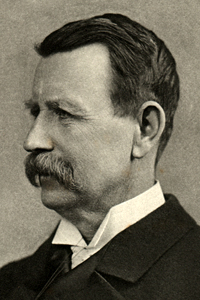 On the 27th of September, 2005, a bulla with a seal impression was found in the sifting project. The bulla made of clay was originally attached to a document ora parcel, and still retains part of its original text on its face. The bulla is black in color as a result of being burned by the fire that ironically caused its preservation. The bulla became fragmented in ancient times and is incomplete. The letters preserved on the middle register are are "...LYHW" while the bottom register reads "..AMR." In light of another published seal, it may be possible to complete the writing as "belonging to Galiyahu son of Imer." The house of Imer was a well-known priestly family at the end of the First Temple period, roughly from around the 7th - 6th centuries BCE, and the days of Return to Zion. This is a direct relic from the Temple Mount of the days of the Kings of Judah. Though tens of bullae have been found in the past in the City of David, this is the first time that a written item from the First Temple period was found on the Temple Mount itself.
On the 27th of September, 2005, a bulla with a seal impression was found in the sifting project. The bulla made of clay was originally attached to a document ora parcel, and still retains part of its original text on its face. The bulla is black in color as a result of being burned by the fire that ironically caused its preservation. The bulla became fragmented in ancient times and is incomplete. The letters preserved on the middle register are are "...LYHW" while the bottom register reads "..AMR." In light of another published seal, it may be possible to complete the writing as "belonging to Galiyahu son of Imer." The house of Imer was a well-known priestly family at the end of the First Temple period, roughly from around the 7th - 6th centuries BCE, and the days of Return to Zion. This is a direct relic from the Temple Mount of the days of the Kings of Judah. Though tens of bullae have been found in the past in the City of David, this is the first time that a written item from the First Temple period was found on the Temple Mount itself. A "pinched style" spout of a Hasmonean oil lamp was found on the eve of Chanukah. The festival of Chanukah celebrates the victory of the Hasmoneans over the Seleucid Empire.
A "pinched style" spout of a Hasmonean oil lamp was found on the eve of Chanukah. The festival of Chanukah celebrates the victory of the Hasmoneans over the Seleucid Empire. A tiny ceramic flask, apparently used for precious liquids, possibly perfumes, or as an amulet to contain a parchment. It is mould-made and is ornamented on both sides with human images: One side shows a roman styled helmeted soldier's head, and the other side shows a head of a woman with coiffed hair.
A tiny ceramic flask, apparently used for precious liquids, possibly perfumes, or as an amulet to contain a parchment. It is mould-made and is ornamented on both sides with human images: One side shows a roman styled helmeted soldier's head, and the other side shows a head of a woman with coiffed hair.
 A collection of various game pieces. Among them a 1st-2nd century CE Roman period ivory dice.
A collection of various game pieces. Among them a 1st-2nd century CE Roman period ivory dice.
 The first coin recovered was from the period of the First Revolt against the Romans that preceded the destruction of the Second Temple. It bore the phrase "For the Freedom of Zion." The find was particularly meaningful inasmuch as it was found in the rubble from the Temple Mount, which was one of the focal points of the war.
The first coin recovered was from the period of the First Revolt against the Romans that preceded the destruction of the Second Temple. It bore the phrase "For the Freedom of Zion." The find was particularly meaningful inasmuch as it was found in the rubble from the Temple Mount, which was one of the focal points of the war.
 A Christian amulet made of silver on which appear figures from the Christian liturgy. Possibly from the 16-17th century.
A Christian amulet made of silver on which appear figures from the Christian liturgy. Possibly from the 16-17th century.
 Remnants and tile pieces from the previous mosque which once stood on the Temple Mount.
Remnants and tile pieces from the previous mosque which once stood on the Temple Mount. A gold coin left by soldiers of Napoleon II - 1858 CE.
A gold coin left by soldiers of Napoleon II - 1858 CE.
 Fragments of ornaments or inlay pieces made from mother of pearl with incised decorations.
Fragments of ornaments or inlay pieces made from mother of pearl with incised decorations.

 The dump site on the northern slopes of the Mount of Olives, Mount Scopus in the background.
The dump site on the northern slopes of the Mount of Olives, Mount Scopus in the background.


 One of the archaeologists tells us about the finds on the Temple Mount
One of the archaeologists tells us about the finds on the Temple Mount





 Snow on roofs in East Jerusalem. These sheep seem to have Greek letters spray painted on them. Perhaps it's a fraternity prank?
Snow on roofs in East Jerusalem. These sheep seem to have Greek letters spray painted on them. Perhaps it's a fraternity prank?


















 An illegibly low-resolution cross-section of Warren's Shaft, Sir Charles Warren's discovery of the shaft through which King David and his soldiers conquered the city.
An illegibly low-resolution cross-section of Warren's Shaft, Sir Charles Warren's discovery of the shaft through which King David and his soldiers conquered the city.




 The view: Looking west. The row of trees marks the end of Jewish West Jerusalem. During the time of the Tanach, where we stand was the Canaanite village of Bezek, conquered by the tribe of Judah in the book of Shoftim (Judges), chapter 1.
The view: Looking west. The row of trees marks the end of Jewish West Jerusalem. During the time of the Tanach, where we stand was the Canaanite village of Bezek, conquered by the tribe of Judah in the book of Shoftim (Judges), chapter 1.

 Looking over the empty land, location of hundreds of future housing units. Mount of Olives in the far background.
Looking over the empty land, location of hundreds of future housing units. Mount of Olives in the far background. Standing in Abu Dis, site of 300 future housing units, looking east towards the other side of the security fence. The building on the left was the orient house, which would have been the Palestinian Parliament building, had negotiations come to fruition.
Standing in Abu Dis, site of 300 future housing units, looking east towards the other side of the security fence. The building on the left was the orient house, which would have been the Palestinian Parliament building, had negotiations come to fruition.